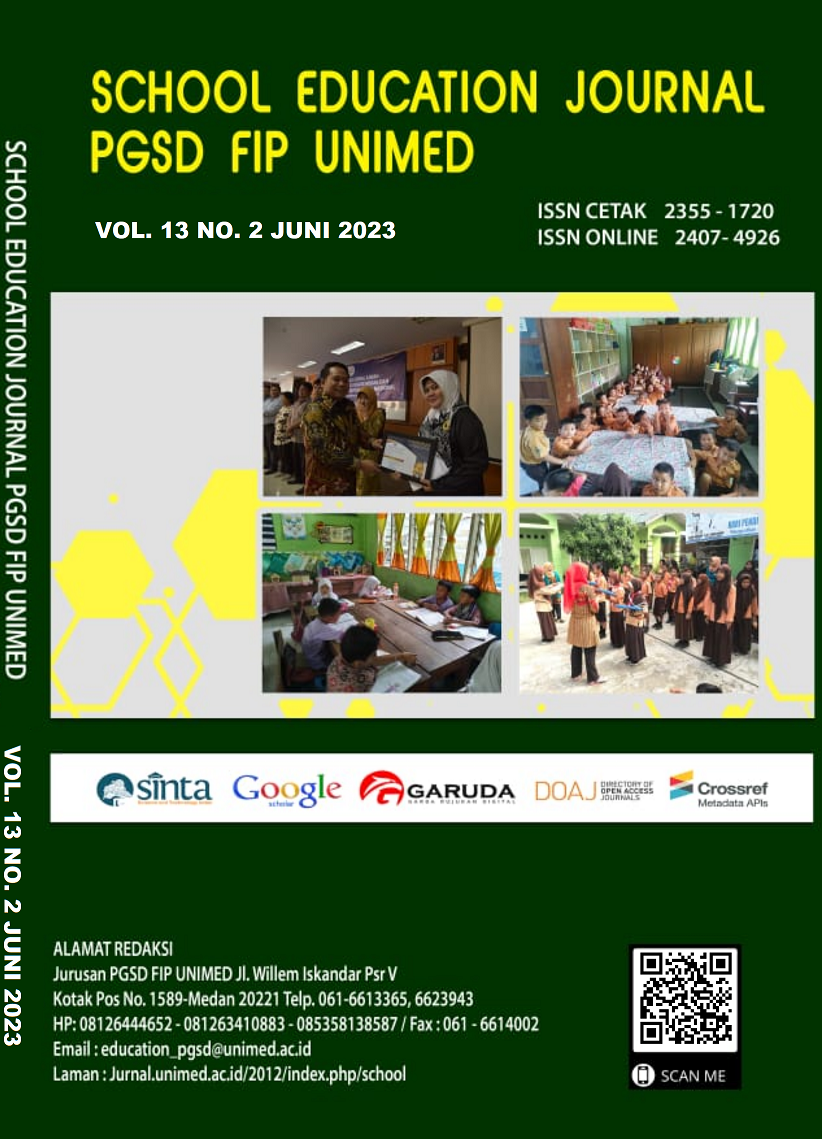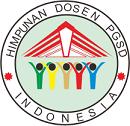PERBANDINGAN KEBERFUNGSIAN DISTRAKTOR DALAM TES: PENDEKATAN TEORI TES KLASIK DAN MODERN DALAM KONTEKS PENDIDIKAN SEKOLAH DASAR
DOI:
https://doi.org/10.24114/sejpgsd.v13i2.47032Keywords:
Distractors, Classical Test Theory, Modern Test TheoryAbstract
This study aims to examine the characteristics of formative test items in elementary schools by comparing the functionality of distractors based on classical and modern test theories. This research is a quantitative descriptive study. The data collection technique used in this study was documentation. The results of the analysis indicate that out of 25 test items, 16% were easy, 72% were moderate, and 12% were difficult, with 3 items not fitting. The measurement results using modern test theory showed that 60% of the distractors were not functioning effectively, and 24% of the items needed to have their answer keys checked, while the measurement using classical test theory showed that 56% of the distractors were not functioning effectively, and 12% of the items needed to have their answer keys checked. Less effective distractors indicate that they are selected more frequently by high-ability groups than low-ability groups. In this context, compared to classical test theory, modern Rasch model is capable of providing more complex results and detecting a greater number of ineffectively functioning distractors. However, in its implementation, the modern Rasch model is more challenging than classical test theory.References
Allen, M. J., & Yen, W. M. 1979. Introduction to Measurement Theory. California: Brooks/Cole Publishing Company.
Azwar, S. 2016. Konstruksi Tes Kemampuan Kognitif. Yogyakarta: Pustaka Pelajar.
Boone, W., Staver, J. R., & Yale, M. S. 2014. Rasch Analysis in the Human Sciences. Dordrecht: Springer.
Jin, K.-Y., & Siu, W.-L. 2022. Exploring the Impact of Random Guessing in Distractor Analysis. Journal of Educational Measurement, 59(1), 43-61. DOI: 10.1111/jedm.12310
Kartianom, & Mardapi, D. 2017. The utilization of junior high school mathematics national examination data: A conceptual error diagnosis. REiD (Research and Evaluation in Education), 3(2), 163-173. http://dx.doi.org/10.21831/reid.v3i2.18120
Mardapi, D. 2017. Pengukuran Penilaian dan Evaluasi Pendidikan (2 th ed). Yogyakarta: Parama Publishing.
Maulana, H., Rangkuti, A. E., & Wahyuni, L. D. 2020. Testing of the Indonesian Version of the Instrument Teachers' Sense of Efficacy Scale Using Rasch Modelling. ANIMA Indonesian Psychological Journal, 35(2), 133-156. https://doi.org/10.24123/aipj.v35i1.2905
Nuryanti, S., Masykuri, M., & Susilowati, E. 2018. Analisis Iteman dan model Rasch pada pengembangan instrumen kemampuan berpikir kritis peserta didik sekolah menengah kejuruan. Jurnal Inovasi Pendidikan IPA, 4(2), 224-233. https://doi.org/10.21831/jipi.v4i2.21442
Puthiaparampil, T., & Rahman, M. 2021. How important is distractor efficiency for grading Best Answer Questions? BMC Medical Education, 21(29), 1-6. https://doi.org/10.1186/s12909-020-02463-0
Shin, J., Guo, Q., & Gierl, M. J. 2019. Multiple-Choice Item Distractor Development Using Topic Modeling Approaches. Front. Psychol, 10(825), 1-14. doi:10.3389/fpsyg.2019.00825
Subali, B., Kumaidi, Aminah, N. S., & Sumintono, B. 2019. Student Achievement Based on The Use of Scientific Method in The Natural Science Subject in Elementary School. Jurnal Pendidikan IPA Indonesia, 8(1), 39-51. https://doi.org/10.15294/jpii.v8i1.16010
Sumintono, B. 2021. Penilaian Keterampilan Berpikir Tingkat Tinggi: Aplikasi Pemodelan Rasch pada Asesmen Pendidikan. Seminar Nasional Pendidikan IPA (pp. 19-32). Lampung: S2 IPA UNLAM PRESS. ISBN: 978-602-60213-0-4 https://jbse.ulm.ac.id/index.php/PMPIPA/article/view/22/0
Syahrial, & Haryanto. 2020. Function of Distractors in Mathematics Test Items on the Achievement Tests based on the Rasch Model. 1st International Conference on Mathematics and Islam (ICMIs) (pp. 210-216). Mataram: SCITEPRESS.DOI:10.5220/000851950 2100216. https://www.scitepress.org/PublicationsDetail.aspx?ID=TMmy8/V83uc=&t=1
Published
Issue
Section
License
Authors whose manuscripts are approved are approved as follows:
- The publication rights for all journal manuscript materials published/published on the SEJ (School Education Journal) E-Journal site are held by the editorial board with the author's knowledge (moral rights remain with the manuscript authors).
- The formal legal requirements for accessing this electronic digital journal article are subject to the terms of the Creative Commons Attribution-ShareAlike (CC BY-SA 4.0) license, which means that E-Journal SEJ (School Education Journal) has the right to store, transfer media/format, manage in the form of a database, maintain, and publish articles without asking permission from the author as long as the author's name remains as the copyright owner.
- Manuscripts published/published electronically are open access for educational, research, and library purposes.










